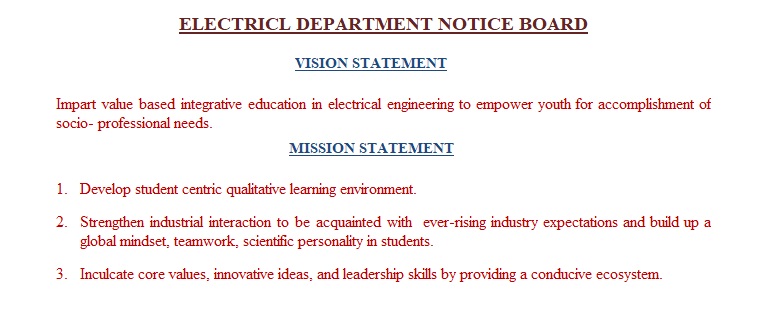Syllabus of Power Electronics –II (2160902) Theory Mid Exam of 30 Marks
6TH Semester Electrical Engineering Feb- March 2020
Unit 1- DC TO AC CONVERTERS: INVERTERS
Performance parameters of Inverters; Classification of Inverters: Voltage source inverters and Current source inverters; Single phase inverters: series, parallel and bridge type (Half wave and Full wave) inverters; Forced Commutated, Line commutated and Self-Controlled Switches based Inverters; Three phase bridge inverters: 180 degree conduction, 120 degree conduction and their comparison PWM Inverters: Principle of PWM control, PWM techniques classifications, Unipolar and Bipolar PWM, Effect of Switching frequency on Harmonic Spectrum, Sinusoidal PWM, Third harmonic PWM, Selective Harmonic Elimination, Hysteresis band current control PWM, Space vector pulse width modulation technique, Comparison of PWM techniques, Voltage and frequency control of single phase and three-phase inverters, Harmonic Cancellation techniques.
Unit 2- AC VOLTAGE CONTROLLERS:
Concept of On-Off or integral cycle control and Phase control; Various single phase full wave ac-ac controllers with R, L and RL load; Analysis for phase control and integral cycle control; Gating requirements; Sequence Control of AC regulators; 3-phase full wave converter configurations with Y and Δ connected loads and their analysis with R load; AC Voltage controller with PWM control; Basic principle of matrix converter
Unit 3- CYCLOCONVERTERS
Introduction; Basic Principle; Single to single-phase cycloconverters; Three-phase half-wave cycloconverters; Cycloconverters for three phase output; Output voltage equation; Output harmonics in cycloconverter; Comparison between cycloconverter and DC link Converter; Load Commutated cycloconverter.
Unit-4 Synchronous Motor Drives
Three phase synchronous motors; variable speed drives; variable frequency control; self-controlled synchronous motor drive employing load commutated thyristor inverter, self controlled synchronous motor drive employing a cycloconverter.
Course Outcome: After learning the course the students should be able to:
C1. Analyze, operate and design dc-to-ac inverters.
C2. Analyze, operate and design ac-to-ac converters.
C3. Apply the knowledge of power electronic converter for speed control of AC motors.
Reference Books:
1. M D Singh and K B Khanchandani, “Power electronics”, TMH, New Delhi, 2nd ed., 2007.
2. Muhammad H. Rashid, “Power Electronics - Circuits, Devices and Applications”, Prentice Hall of India, 3rd ed., 2003.
3. Vedam Subramanyam, “Power Electronics – Devices, Converters and Applications”, New Age International Publishers Pvt. Ltd., Bangalore, 2nd ed. 2006.
4. P.S. Bimbhra, “Power Electronics”, Khanna Publishers, New Delhi, 2012.
5. Ned Mohan, Undeland and Robbins, “Power Electronics – Converters, Applications and Design”, John Willey & sons, Inc., 3rd ed., 2003.
6TH Semester Electrical Engineering Feb- March 2020
Unit 1- DC TO AC CONVERTERS: INVERTERS
Performance parameters of Inverters; Classification of Inverters: Voltage source inverters and Current source inverters; Single phase inverters: series, parallel and bridge type (Half wave and Full wave) inverters; Forced Commutated, Line commutated and Self-Controlled Switches based Inverters; Three phase bridge inverters: 180 degree conduction, 120 degree conduction and their comparison PWM Inverters: Principle of PWM control, PWM techniques classifications, Unipolar and Bipolar PWM, Effect of Switching frequency on Harmonic Spectrum, Sinusoidal PWM, Third harmonic PWM, Selective Harmonic Elimination, Hysteresis band current control PWM, Space vector pulse width modulation technique, Comparison of PWM techniques, Voltage and frequency control of single phase and three-phase inverters, Harmonic Cancellation techniques.
Unit 2- AC VOLTAGE CONTROLLERS:
Concept of On-Off or integral cycle control and Phase control; Various single phase full wave ac-ac controllers with R, L and RL load; Analysis for phase control and integral cycle control; Gating requirements; Sequence Control of AC regulators; 3-phase full wave converter configurations with Y and Δ connected loads and their analysis with R load; AC Voltage controller with PWM control; Basic principle of matrix converter
Unit 3- CYCLOCONVERTERS
Introduction; Basic Principle; Single to single-phase cycloconverters; Three-phase half-wave cycloconverters; Cycloconverters for three phase output; Output voltage equation; Output harmonics in cycloconverter; Comparison between cycloconverter and DC link Converter; Load Commutated cycloconverter.
Unit-4 Synchronous Motor Drives
Three phase synchronous motors; variable speed drives; variable frequency control; self-controlled synchronous motor drive employing load commutated thyristor inverter, self controlled synchronous motor drive employing a cycloconverter.
Course Outcome: After learning the course the students should be able to:
C1. Analyze, operate and design dc-to-ac inverters.
C2. Analyze, operate and design ac-to-ac converters.
C3. Apply the knowledge of power electronic converter for speed control of AC motors.
Reference Books:
1. M D Singh and K B Khanchandani, “Power electronics”, TMH, New Delhi, 2nd ed., 2007.
2. Muhammad H. Rashid, “Power Electronics - Circuits, Devices and Applications”, Prentice Hall of India, 3rd ed., 2003.
3. Vedam Subramanyam, “Power Electronics – Devices, Converters and Applications”, New Age International Publishers Pvt. Ltd., Bangalore, 2nd ed. 2006.
4. P.S. Bimbhra, “Power Electronics”, Khanna Publishers, New Delhi, 2012.
5. Ned Mohan, Undeland and Robbins, “Power Electronics – Converters, Applications and Design”, John Willey & sons, Inc., 3rd ed., 2003.

No comments:
Post a Comment